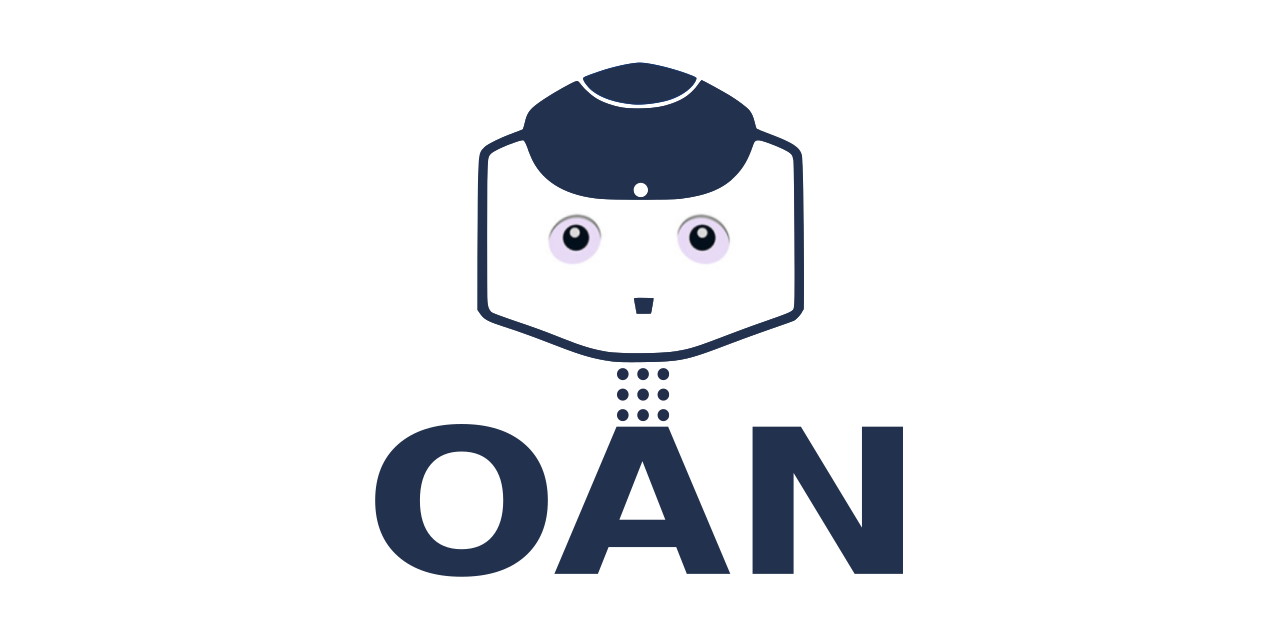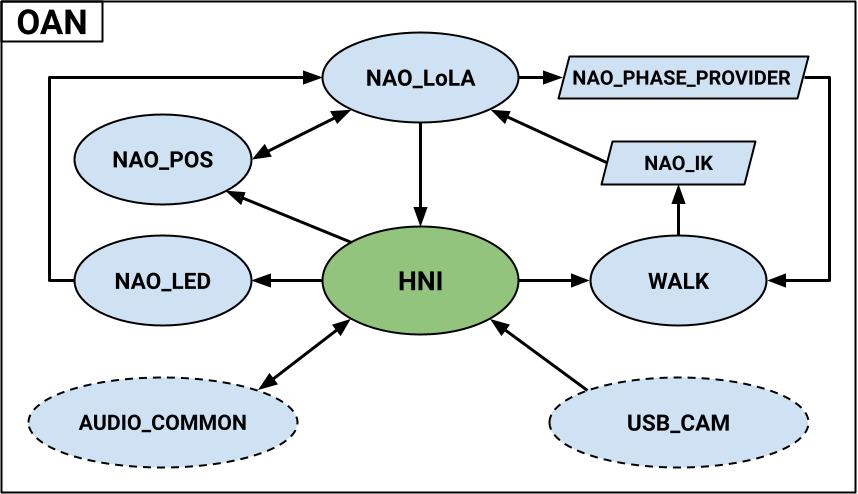Open Access NAO (OAN) is an open-source ROS2-based software framework for HRI applications with the NAO robot.
Embracing the common demand of researchers for better performance and new features for NAO, the authors took advantage of the ability to run ROS2 on board NAO to develop a framework independent of the APIs maintained by the manufacturer.
This framework is supported by the ROS-Sports organization.
Our system provides NAO with not only the basic skills of a humanoid robot such as walking and reproducing movements of interest but also features often used in HRI such as:
- Speech recognition/synthesis via Google Cloud Platform.
- Face and object recognition via YOLOv8.
- use of Generative Pre-trained Transformer (GPT) model for conversation thanks to ChatGPT.
The developed code is therefore configured as a ready-to-use but also highly expandable and improvable tool thanks to the possibilities provided by the ROS community.
A video showing these features is available on YouTube.
This repository collects all the code on which OAN is based. The following image provides an overview of the different parts and the flow of information.
Parallelograms and ellipses are ROS packages and modules (a collection of packages), respectively. Dashed lines shows parts developed by the ROS community.
For a detailed description of each module please look at the related paper: Open Access NAO (OAN): a ROS2-based software framework for HRI applications with the NAO robot
If you have never used vcstool, install it. The easyiest way is via pip
sudo pip install vcstool
In order to help the organization of your code and syncronization with a real NAO, we suggest to create a new ROS2 workspace
mkdir -p oan_ws/src
cd oan_ws
Clone the OAN repository
git clone https://github.com/antbono/OAN.git
Import all the needed packages via vcstool
vcs import src < OAN/oan.repos --recursive
OAN leverages on two packages provided by the ROS Device Drivers Community.
-
audio_common is necessary to use NAO speakers and microphones. Unfortunately, there is a long-standing problem for the ROS2 version of this package (see #227). For this reason, at the moment, we use the solution proposed in #248 (you don't have to do anything).
-
usb_cam, is used to stream the data of the NAO's rgb cameras to ROS2 topics. Although it is not necessary for building the framework, for debugging and testing it is useful to install the package on your machine:
sudo apt-get install ros-<ros2-distro>-usb-cam
Since ROS Rolling is migrating to Ubuntu 24.04 but NAO uses 22.04, we recommend to use ROS Humble or ROS Iron.
Build the packages
rosdep install --from-paths src -i -r -y
colcon build
It may take some time depending on the used machine.
Do not choose the --symlink-install option if you want to use the sync script as reported in 3.4 .
Install YOLOv8 on your machine as stated in the official guide. Note that the simplest way to make YOLO and other python packages working with ROS on multiple machines, is not using any python virtual environment.
In order to run the provided software on a real NAO v6 you need to install the custom Ubuntu OS and a version of ROS2.
The first step is to install the Ubuntu 22.04 image created by the Nao Devils SPL team. Instructions are listed in naov6_flash.md.
At the moment, we suggest the ROS Humble release because most of the modules are tested on it.
Follow the ROS2 official guide to install the binary packages for Ubuntu. Please be careful and use the ROS-Base Install (Bare Bones), since the installed Ubuntu does't have a GUI.
In order to exploit all the features provided by OAN, you need to install some external softwares.
Instructions are listed in oan_dependencies.md.
Finally, use the sync script to send the packages you built on your machine to NAO. This avoids building the packages on NAO which requires a lot of time.
To test the framework quickly, you can reproduce the aforementioned experiment by following the instructions on the hni repository.
Enjoy it! :D

